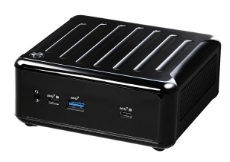AMD Updates GPU, CPU Road Maps
AMD updated its x86 and graphics roadmaps at CES, giving first details of plans for 12-nm CPUs and a 7-nm GPU. It also rolled out six x86 chips with integrated graphics targeting a variety of desktop and notebook sockets.
The company is now sampling a 12-nm upgrade of its Ryzen desktop processors launched last year in a 14-nm process. The chips will be in production in April using the upgraded process that Globalfoundries disclosed last year. Meanwhile, a Ryzen 2 design has been completed, but AMD gave no details of its internals or shipping dates.
AMD’s first 7-nm GPU will be a version of its Vega design targeting machine learning. The company is playing catch-up with GPU rival Nvidia, which dominates the emerging area after rolling out Volta in 2017, its first chips with dedicated hardware for machine learning.
The 7-nm GPUs will presumably be made at TSMC, AMD’s usual foundry for GPUs; however, the company did not specify its plans. Separately, AMD said that it will roll out a version of Vega for ultrathin notebooks this year.
AMD expects to be in production in mid-February with its first two desktop processors that embed its Vega GPU cores as well as four of its x86 Zen cores. The chips run at 3.7 to 3.9 GHz, consume 45 to 65 W, and aim to enable gaming at 1080-progressive resolution without a discrete graphics card.
Separately, AMD expects to be in production by June with a line of three high-end notebook processors also combining Vega GPU cores with four x86 Zen cores. They will run at up to 3.4 to 3.8 GHz and consume 15 W. AMD said that they will provide 25% to 50% more graphics performance than Intel’s i7-7500U and -8550U chips.
Finally, AMD added one low-end product to its existing line of mainstream notebook chips that combine Zen and Vega cores.
Shipping the integrated CPU/GPU products that AMD calls APUs is key for the company, said Nathan Brookwood, principal of market watcher Insight 64. Most of the Ryzen products that shipped in 2017 were x86-only chips that required systems to use discrete graphics cards.
Notebooks are the biggest chunk of the PC market, and almost all of them use integrated graphics, and desktops with integrated graphics are the next biggest chunk. So AMD was constrained in the market that it could serve last year, and this year, their reach will be much greater, said Brookwood.
The company might have a small advantage over rival Intel after the security issues raised last week.
“AMD is less impacted by Meltdown than Intel,” he added. “I don’t think that’s a big deal for consumers, but some of them might be scared by it and prefer AMD parts.”
在线留言询价

AMD Takes Center Stage at CES
- 一周热料
- 紧缺物料秒杀
| 型号 | 品牌 | 询价 |
|---|---|---|
| CDZVT2R20B | ROHM Semiconductor | |
| MC33074DR2G | onsemi | |
| RB751G-40T2R | ROHM Semiconductor | |
| TL431ACLPR | Texas Instruments | |
| BD71847AMWV-E2 | ROHM Semiconductor |
| 型号 | 品牌 | 抢购 |
|---|---|---|
| TPS63050YFFR | Texas Instruments | |
| IPZ40N04S5L4R8ATMA1 | Infineon Technologies | |
| BU33JA2MNVX-CTL | ROHM Semiconductor | |
| STM32F429IGT6 | STMicroelectronics | |
| ESR03EZPJ151 | ROHM Semiconductor | |
| BP3621 | ROHM Semiconductor |
- 周排行榜
- 月排行榜
AMEYA360公众号二维码
识别二维码,即可关注



























